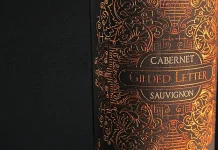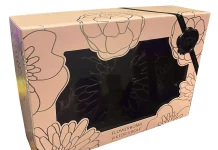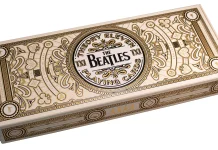by Jeff Peterson, PostPress

With growth in the digital printing marketplace and shorter runs on more conventionally printed materials, there has been an increased demand for diecutting, kisscutting, scoring and perforating for these types of applications. Sheet-fed rotary diecutting, utilizing a magnetic cylinder and flexible steel plates, has found a home, meeting the needs of direct mail, short-run greeting cards and folding cartons, presentation folders, kisscut labels, door hangers and much more. “Rotary diecutting has very quick setup and can run at high speeds, making it ideal for short-, medium- and even some high-volume jobs,” stated MBO America Marketing Coordinator Ryan Manieri.
The key to a rotary diecut system is the use of a magnetic cylinder to simply and quickly mount flexible steel diecutting plates. Jobs literally can be changed over in just a few minutes. This is an essential attribute for short run digital work where long makereadies and setups become much too costly and time-consuming.
The steel plates are manufactured with the desired image “burned” into the plate and then chemically etched to where the remaining cutting blades/knives are left above the surface of the plate and then CNC-sharpened as a final step. The cutting angles are determined by the substrate that is being cut and the process involved. “Diecutting, kisscutting, perforating, creasing and even shallow embossing are possible with a rotary diecutting system,” explained Jack Mathews, business manager for Standard Finishing Systems. “The die manufacturing process also allows for much more intricate designs and patterns than a conventional steel rule die and requires significantly less space to store.”
“Another main advantage is the ability to create multi-level dies that can perform both diecutting and kisscutting in one pass,” stated Kevin Corwin, product manager for Rollem USA. “In addition, the cutting blades can be located much closer together than with a steel rule die,” he continued. This type of flexibility can allow a job to go through the rotary diecutting system one time versus a potential two passes through the press.
Most rotary diecutting systems are manufactured to handle sheet sizes that range from 8×8″ to 15×20″, although there are units that handle sheets as large as 20×29″. This provides an excellent “sweet spot” for handling digitally printed sheets and shorter run offset printed material.
As with any process, rotary diecutting isn’t the answer for all applications. More traditional steel rule dies are preferred for large runs, difficult-to-cut materials (i.e., plastic sheets) and jobs that will repeat over and over again. And, currently, most of the rotary cutting systems are for smaller sized sheets. Large run sheet-fed applications utilizing sheets that are 28×40″ or larger still will be diecut, scored and/or perforated utilizing a more traditional platen or clamshell diecutting press with steel rule dies.
The following is a look at rotary diecutting systems available in the marketplace today:

Rollem’s Insignia line of rotary diecutters is a production-class sheet-fed rotary diecutter designed for short-run label, packaging and mail applications. Diecutting stocks up to 24pt. in thickness, the Insignia5 will run sheet sizes up to 20×15″, while the Insignia7 will handle up to a B2 30×24″ sheet. These machines are available in either a single or dual magnetic cylinder configuration, as well as in a bearer or non-bearer system to better suit each companies individual production needs. Featuring a press-style register system, the Insignia will produce 100 percent sheet-to-sheet registration accuracy.

The Standard Horizon RD-4055 rotary diecutter (distributed by Standard Finishing Systems) diecuts, creases, perforates, slits and hole punches digital and offset printed sheets. Feeding, diecutting and separating are achieved in one pass at speeds up to 6,000 cycles per hour. A uniquely designed servo motor-controlled “Repeat Register” feature allows multiple-up applications from single-up die to minimize die cost. Both setup and operation can be done through an intuitive touchscreen. After setting the upper and lower die, the RD-4055 can be set up by simply inputting the sheet size and diecutting position. Standard also offers a more compact rotary diecutting unit (model RD-3346) for short-run production and smaller sheet size.

MBO America’s BSR 550 Servo rotary diecutter is able to process both single and folded products. Its innovative engineering allows it to process mailings, greeting cards, folding cartons, labels and many other products in a one-up or multi-up production setting. Because of its flexible dies, the BSR 550 Servo can diecut, kisscut, perforate, score, emboss and more. Standard features include flexible diecutting technology, touchscreen user interface, magnetic cylinder for easy die changing, inline waste removal and a variety of feeder options. The BSR 550 Servo can run at speeds up to 12,000 cycles per hour and handle sheet thicknesses from 24lb. paper to 19pt board. It also can incorporate a maximum sheet size of 21 5/8×29 ½”.

Duplo USA’s UD-300 rotary diecutter produces a variety of digital print and packaging products. Designed for use with flexible dies, it performs multiple cuts, slits, slit-scores, kisscuts perforations and window punches for single and multi-up pieces on a wide variety of paper stock up to 14×20″ at 3,000 sheets per hour. Features of the UD-300 include a rotary magnetic cylinder for fast die changeover and minimal setup and an optional separator/conveyor unit with photo eye sensor.




